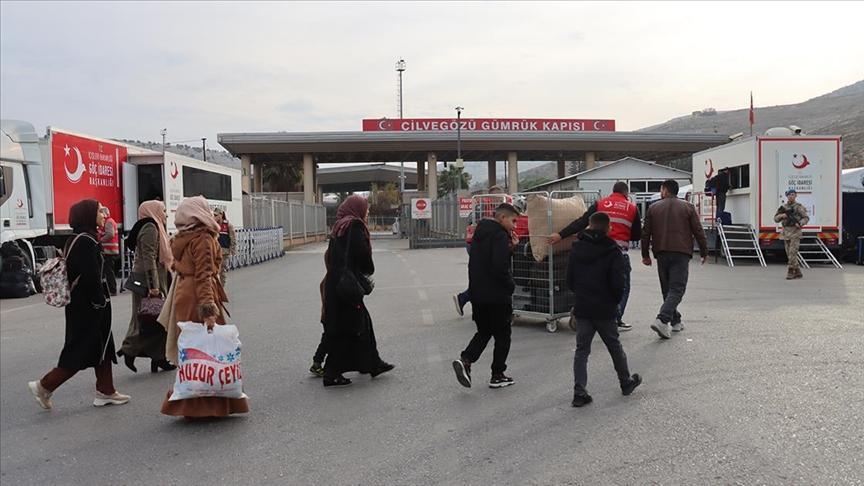From the anti-ISIL motion to the March 1 motion
On Oct. 2, the Turkish Parliament voted for a motion authorizing the government to deploy troops abroad and allow the deployment of foreign military forces. This reminded us of the motion of March 1, 2003, just before the Iraqi intervention. At that time, the Turkish Parliament, which would have allowed the U.S. military to intervene in Iraq from Turkish soil, rejected the motion.
I met with Deniz Bölükbaşı, a retired ambassador and a former MP from the Nationalist Movement Party (MHP), who was leading the negotiations with the U.S. in 2003. Our conversation enabled us to compare and contrast the content of the mandates and also the political conditions of the day.
Bölükbaşı started our conversation, saying Turkey was the country with the highest number of military motions in its history. However, he said it was also quite unskilled in using them. Accordingly, more than 100 mandates have been issued in the last 20 years alone. He underlined that the mandate of March 1 was the “mother of all of the motions so far.” You will see why below.
Bölükbaşı said there were some standard statements in all of the motions, underlining that both the scope and the objective of March 1 were quite explicit and detailed. The number of the foreign soldiers (mostly 62,000) along with the number of helicopters and aircraft were also specified. The number of Turkish soldiers to cross to northern Iraq (more than 35,000) were also written. In today’s motion, however, there is no such number specified at all.
In addition, the March 1 motion specified in which bases foreign troops would be deployed. In the current one, however, it is only written that this deployment would be done “according to the principles the government will specify.” Moreover, the use of Turkish airspace is not mentioned at all. After the rejection of the March 1 motion, however, the Turkish Parliament passed another one to authorize the use of the İncirlik airbase which was later used by the U.S. as the main hub for arms and ammunition supply.
Bölükbaşı also reminded me that the Parliament passed a third motion after the refusal of the first one to authorize the deployment of Turkish soldiers in northern Iraq. Yet this could not be applied since both northern Iraq and the U.S. did not accept that due to the Turkish Parliament’s refusal on March 1.
In addition, the March 1 motion also specified and even mapped the borders of the zone where the Turkish soldiers would be deployed in northern Iraq. Bölükbaşı had written in his book, “The March 1 Incident,” that this so-called “rain line” would be 40 kilometers deep. However, today there is no statement about that zone at all.
Why is the current motion so short of detail? First of all, there was not enough time to prepare. March 1 motion had been under negotiation for months. A military memorandum of understanding had been prepared which included all the details of a military operation. This passed to the Parliament only after there emerged a consensus on the motion.
The current one, however, came to Parliament in just one week, right after President Recep Tayyip Erdoğan’s visit to New York two weeks ago. Before that visit, Turkey had no intention of getting engaged militarily at all. Hence Bölükbaşı argues that Turkey was mentally not prepared for the motion. When I asked him if it was maximalist in terms of its objectives, he said: “This is true when you look at its consequences.”
So, will this motion pave the way for Turkey’s ground operation? Bölükbaşı said the fight on the ground was being pursued by the Kurdish peshmerga along with the Kurdistan Workers’ Party (PKK). Hence, he said, both Turkey would not want to join this front while the U.S. does not need it. Turkey would take such action only if the Tomb of Süleyman Şah, a sovereign Turkish exclave situated in Aleppo Governorate, was attacked by ISIL.
Would coalition soldiers pass through Turkey? He said this would happen only with the aim of training the moderate Syrian opposition in northern Syria.
What about a buffer zone? Bölükbaşı emphasized that Turkey cannot realize this on its own. Such a zone would require patrolling both from the air and the ground, which would require at least eight to 10 brigades (i.e. 40,000 to 50,000 soldiers). This would require patrolling against Bashar al-Assad’s aircraft as well. In addition, Turkey hasn’t had such an experience before. Moreover, a buffer zone could trigger a clash with the regime’s forces. And in that region a buffer zone also means the entry of Turkey into Rojava (northern Syria). Last but not least: It would also require a U.N. Security Council resolution.
Bölükbaşı pointed to an important fact: When the U.S. emphasized that there would be no boots on the ground, it made no distinction between a ground operation and a buffer zone. Hence Washington would probably not support such an initiative.











